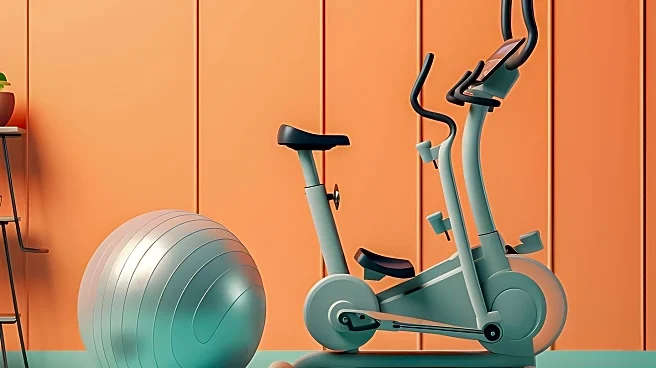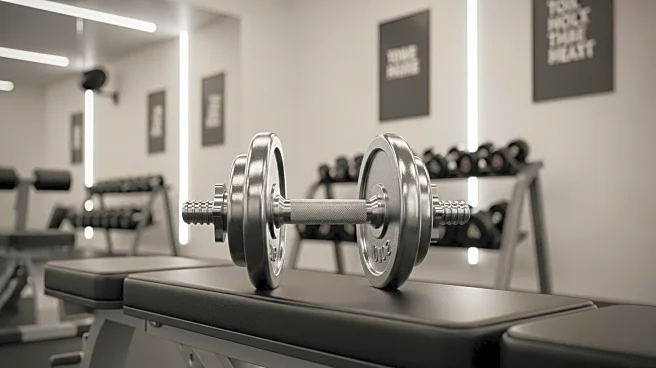What is the story about?
What's Happening?
A study published in BMJ Sports Medicine reveals that short bursts of exercise, termed 'exercise snacks,' can significantly improve cardiorespiratory and muscular fitness in adults who do not regularly exercise. The research, led by Miguel Ángel Rodríguez, involved analyzing data from seven randomized clinical trials with over 400 inactive participants. The study found that brief, vigorous activities like stair-climbing or tai chi, performed multiple times a day, enhance fitness levels and adherence to exercise routines.
Why It's Important?
The concept of 'exercise snacks' offers a practical solution for individuals who struggle to find time or motivation for traditional exercise routines. By breaking down physical activity into manageable segments, this approach can help inactive adults gradually build fitness and improve health outcomes. The study's findings may influence public health strategies and encourage the adoption of more flexible exercise regimens, potentially reducing the prevalence of lifestyle-related diseases.
What's Next?
As awareness of 'exercise snacks' grows, healthcare providers and fitness professionals may incorporate this approach into recommendations for patients and clients. Further research could explore the long-term effects of this exercise method on various health markers, potentially leading to broader acceptance and implementation. Public health campaigns may also promote 'exercise snacks' as a viable option for improving population health.
Beyond the Headlines
The study highlights the importance of innovative exercise strategies in addressing the challenges of modern lifestyles, where time constraints and sedentary habits are common. By offering a flexible and accessible approach to physical activity, 'exercise snacks' could contribute to a cultural shift towards prioritizing health and wellness in everyday life. This shift may also influence the development of new fitness products and services tailored to diverse needs.
AI Generated Content
Do you find this article useful?














